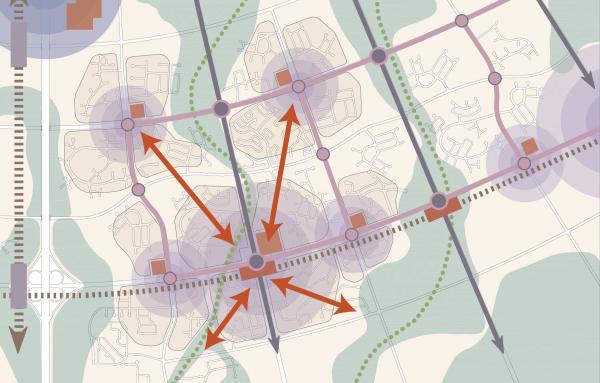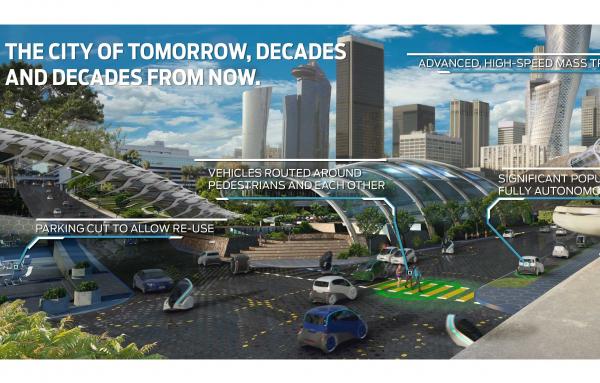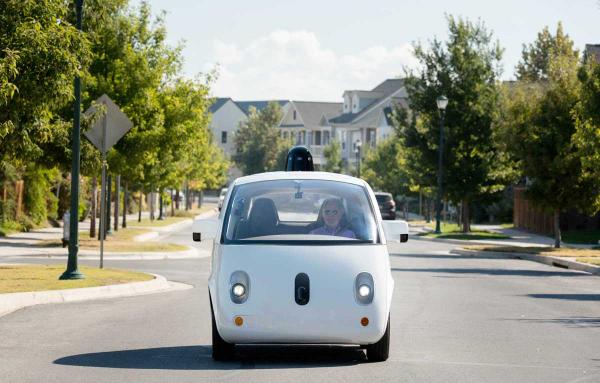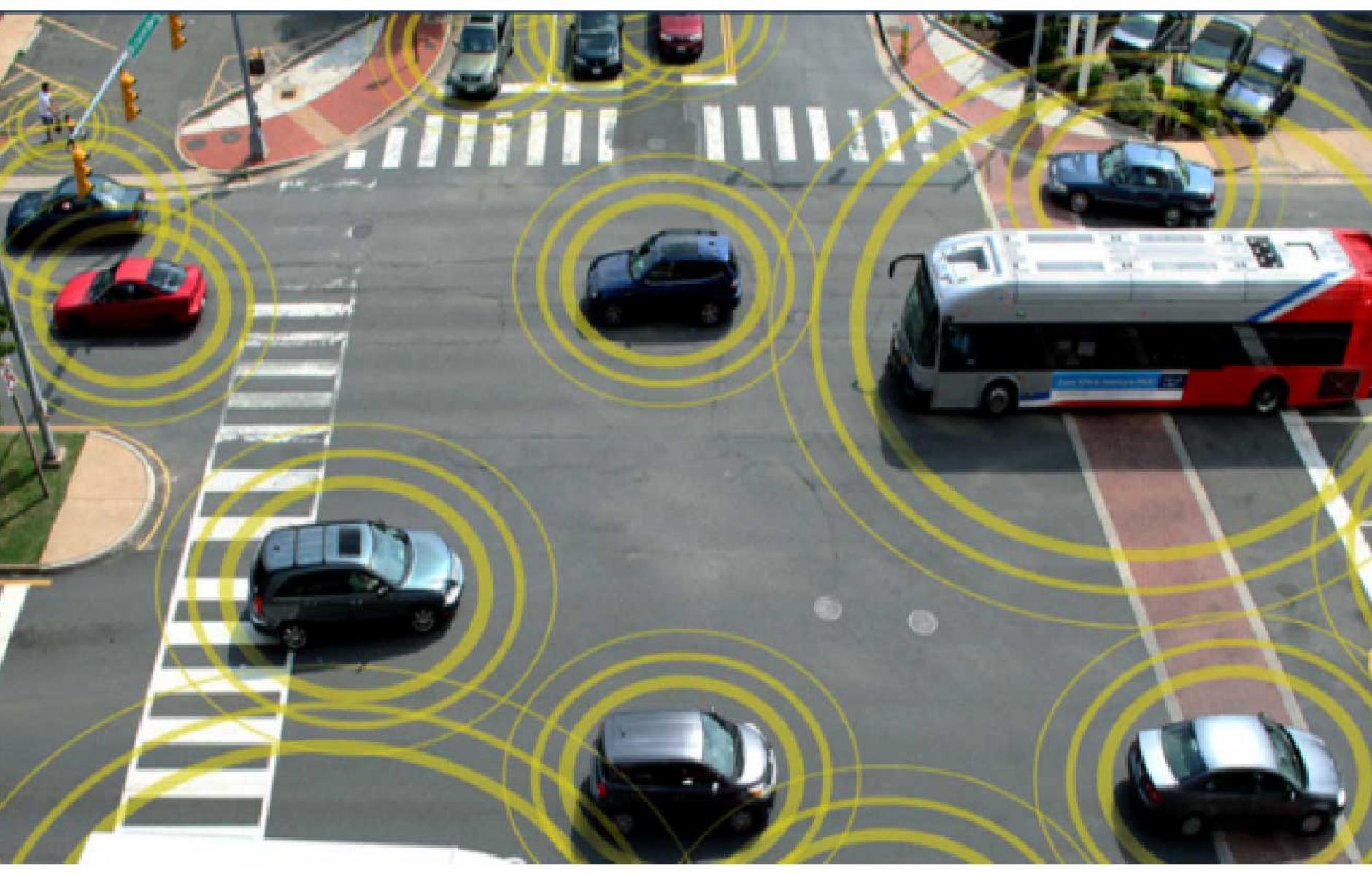
Autonomous vehicles: Hype and potential
Every new transportation technology impacts the geography of our communities and the structure of our lives. Autonomous vehicles (AV) are one such technology. Just as our freeway system or the streetcar network shaped our cities and lifestyles, AV will remake the metropolis once again. The question is how? And in so doing, with what unintended consequences? As with most technology it depends on how it is used.
AVs have the potential to offer a variety of advantages. Many believe that shifting to AV would eliminate vehicles from our roads[1] and offer myriad benefits including improved traffic flow, increased access to parking options, reduced road accidents, and enhanced mobility for the handicapped, elderly, and kids. With AV we would supposedly free ourselves from parking hassles, congestion, and many financial and environmental costs. Unfortunately, reaching this outcome is not that simple.
The reality is that AV could actually make things worse. Why? Primarily, the convenience of AV could result in more miles traveled—up to 35 percent for personal AV and 100 percent for AV taxis—as riders acquire a greater tolerance for long commutes and as vehicles develop the capability to travel around on their own looking for parking or riders. The only thing worse than a Single Occupant Vehicle is a Zero Occupant Vehicle (ZOV).
With AVs on the road, US vehicle miles traveled (VMT) are estimated to increase by two trillion to three trillion miles over the next 30 years—more than five times the increase over the last 30 years when VMT rose dramatically due to suburbanization, women entering the workforce, and inexpensive gas. More VMT means more road use and, therefore, more congestion and carbon emissions (assuming any mileage efficiency available to AVs would also be available to standard cars).
These outcomes are not inevitable—indeed, how better or worse AV is for a region will depend on many factors—one of the most important being how AV technology is used. There are three district applications of AV technology; in private cars, taxis, or transit systems. Each of the three has differing impacts and benefits. In the end, all three types of AV will exist, but in what sequence, in which environments, and in what proportions?
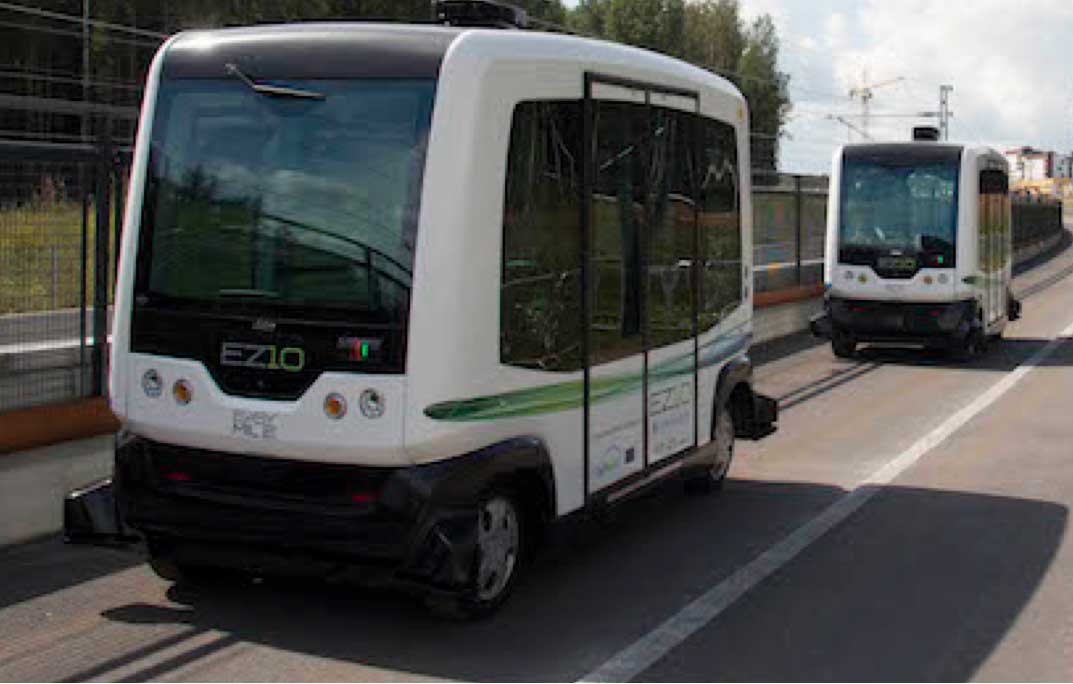
Personal Autonomous Vehicles
There are many levels of personal AV technology, each with differing capacities and potentials. NHTSA defines five levels, with the first two already in existence. These vehicles provide cruise control, auto spacing, and automatic lane-changing capacities, but the driver must always be engaged. From there, the technology gets more complex. Level 3 AV technology allows some driver distractions, but they must be ready to take over in a few seconds if needed. Level 4 is similar, but has the capacity to come to a safe stop if the driver cannot re-engage. Level 5 is truly a driverless vehicle. Each of these levels requires differing capacities for differing environments. Today, we can use the auto-pilot features of a Level 3 AV on a freeway, but not on city streets. Level 5 will work on a dedicated transit lane before it will work in general traffic. So deployment timing will depend on the environment as well as the technology.
An additional complication is the mix of traffic. AV systems run more safely and efficiently if they are in dedicated lanes—or environments that avoid mixing with other cars, trucks, buses, and bikers—where they can travel closer together in “platoons” (reducing road space) and communicate with each other to coordinate movements through intersections (improving traffic flow). Even when AVs function in complex mixed environments, their capacity to improve traffic flow by driving close together or coordinating with other vehicles will still be compromised when in mixed flow. Therefore the rate of adoption will affect performance dramatically. Some estimate driverless vehicles could dominate city streets by 2040; others predict 2060. So the mixed phase will be with us for some time, and this phase will be the real design challenge.
A city with a 50 percent mix of private AVs will add about 20 percent to its VMT, and rise to 35 percent with full saturation of AVs. Alternatively, on freeways, a 75 percent mix of AVs will enhance traffic flow by 25 to 35 percent. So personal AVs will be good for suburbs where freeways are common, arterials are big enough to handle more miles driven, and long commutes are easier to tolerate.
In sum, personal AV could result in more sprawl as commutes from far distances becomes less irritating. VMT will increase, causing energy use and carbon emissions to climb even beyond what may be offset by more efficient electric motors. In the near term, personal AV in older city centers with complex mixed flow will lead to more congestion resulting from of more VMT and the compromised operation of AV’s full capabilities. The overall outcome for private AV: more VMT, more suburban sprawl, and more congestion in urban centers.
Autonomous taxis: Single or shared
Applying AV technology to single-passenger taxis or Uber-like systems unfortunately has many of the same problems of private AV; it would have few road capacity benefits in mixed flow traffic and contribute even more to increased VMT as AV taxis reposition for passengers and drive extra distances for remote pick-ups. However, they could also reduce household auto ownership, which could lead to lower parking needs along with increased mobility for the elderly, handicapped, and children.
AV taxis hold complicated promise in urban environments. Studies done by ITF[2] that assumed complete elimination of private cars from Lisbon’s city center showed all current trips could be handled by just a quarter of the city’s existing cars. But the penalty would be huge; a doubling of miles driven, once again because of repositioning, circling, and remote pick-ups. However, factoring in shared rides reduced the added miles to a 25 percent increase. And if the shared taxis brought people to mass transit rather than to final destinations, increased VMT came down to just nine percent. Additionally, trip time would be reduced because, without mixed flow, the AV technology could function at its highest level and reduce congestion through platooning and smart intersection coordination.
These outcomes would be further enhanced by virtually eliminating need for parking, opening up extra lanes for bikers and more space for pedestrians. In addition parking lots could become infill sites offsetting the need for suburban sprawl. So shared AV taxis in areas that ban private autos and maintain high capacity transit service would be a great application of the technology, even if it didn't reduce energy consumption or carbon emissions.
While such shared taxis have the potential to be a good application of AV technology, especially in urban centers, the near-term issue in mixed flow would compromise both travel efficiency and the ability to eliminate parking.
To be effective, AV taxis would need to be shared, avoid mixed flow streets, and be used primarily for short trips or as feeders to transit. Its better outcomes will be compromised for some time as the transition to purely AV environments evolves. The mixed flow phase will dominate the next decades, reducing the ultimate efficacy of the option, and the private vehicle fleet may in fact never be fully eliminated, in which case this option will never provide its ultimate benefits.
Autonomous rapid transit
Autonomous rapid transit (ART) proposes the application of AV technology in shared vehicles on dedicated transit lanes similar to Bus Rapid Transit (BRT) systems. Such an approach would achieve the efficiency of AV flow without eliminating private vehicles from city streets. It would minimize the operational costs of BRT by eliminating the need for drivers; reduce VMT significantly by tailoring capacity by time and place to match demand, and cut travel time for many by going direct to destination.
Most importantly, ART could form a feasible, smooth transition from the existing conditions and ownership patterns to completely shared AV environments.
A recent study by F&P and Calthorpe Associates[3] looked at replacing buses in a proposed BRT line in San Francisco along a stretch of Geary Boulevard. The BRT system would convert two lanes of the six-lane arterial into dedicated bus transit lanes. As an alternate to buses, the study looked at using a fleet of 4-person vehicles that would gather at least three passengers before proceeding direct to destinations. In addition to this skip-stop operation, the cars would platoon and trigger green lights at intersections. The analysis found that such a system would cut delay time in half and reduce travel time by 35 percent compared to BRT or the cars traveling alongside in non-dedicated lanes.
This autonomous rapid transit system could be efficient in many other ways. The study found that, with either full-size, 20-passenger, or shared 4-passenger AV vehicles, ART lanes would have a peak throughput capacity equal to moderate BRT systems around the world today—about 2,800-4,000 passengers per peak hour. This is more than five times the capacity of a standard auto-dominated city lane. More importantly: In off-peak periods many vehicles could be demand-responsive, reducing inefficient low occupancy service and saving energy, operation and maintenance costs while eliminating late night shut downs. With a well-mixed fleet of large and small vehicles, ART could operate 24/7 and never run empty.
Perhaps its most important attribute is that it can attract what are called “choice” riders. Oftentimes, new transit systems attract transit riders from other systems rather than getting habitual drivers to give up their cars. But with the relative privacy, direct to destination service, and faster travel times, ART could potentially coax drivers from their cars and into their shared AVs. In addition, low operating costs would allow a transit agency to provide more service on more routes, further reducing private auto use.
Finally, the ART system has the advantage of being able to function with all the travel efficiencies of Autonomous Vehicles, but on mixed flow streets. Over time, it would provide an organic progression that expands from dedicated lanes, to networks of ART streets, ART districts, and ultimately to ART throughout the city.
An ART future
Autonomous vehicles will ultimately find their way forward in different forms, and in different places. The unintended consequences should be kept in mind as policymakers and manufacturers apply these new capabilities. Foremost is the fact that private or taxi AVs will not relieve congestion, and may even worsen it. Standard private vehicles and trucks must be eliminated before AV can function at full efficiency on local streets. Until then, AVs will lead to increased miles driven–one third more for personal AV, and up to twice as many for unshared AV taxis. In addition, personal AV will certainly heighten suburban sprawl as longer trips become more tolerable.
In the short term and the long term, the best application of AV technology is a network of autonomous rapid transit lines combined with high capacity metro transit systems. This will avoid degradation of AV performance due to mixed flow, and will likely attract users to reduce their private auto use. This can then easily evolve into complete ART districts in which private cars are eliminated. The urban form that ultimately emerges is compelling; a city with almost no on-street parking, housing free of garage costs, abundant pedestrian zones, ubiquitous bike lanes, and no ugly surface parking lots. What’s more, each step along the way will improve our existing communities.
References
Fehr & Peers (2014). Effects of Next-Generation Vehicles on Travel Demand & Highway Capacity. Fehr and Peers (www.fehrandpeers.com); at www.fehrandpeers.com/fpthink/nextgenerationvehicles
Fehr & Peers and Calthorpe Associates (2015). Autonomous Rapid Transit (ART) Performance Evaluation for Geary Boulevard, San Francisco. Unpublished study.
ITF (2014). Urban Mobility: System Upgrade. International Transport Forum (www.internationaltransportforum.org) and Corporate Partnership Board; at http://internationaltransportforum.org/cpb/pdf/urban-mobility.pdf
[1] ITF 2014






